With the Renaissance and the early Modern Age, there was a major change for the world of wine due to three major factors: the rediscovery of the ancient culture, the introduction of printing and the new interest in science.
From the Renaissance onwards, there was an intense flowering of treatises of all kinds, including wine production. The introduction of the printing allowed them to spread widely. They were increasingly precise and detailed works. The illustrations were no longer merely ornamental but explained the concepts described in the text. In agricultural and botanical treatises, for example, the plants were depicted as realistically as possible to help recognizing them, as well as to explain how to do pruning (or other work). The agricultural tools were drawn in detail, with the variations in different geographical areas.
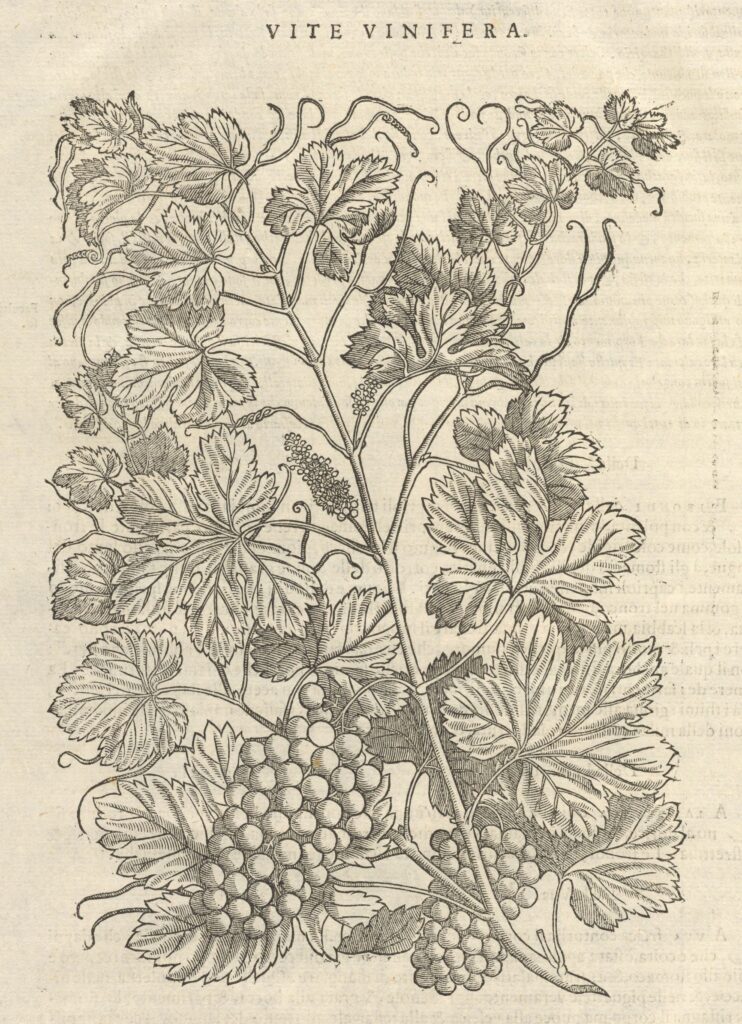
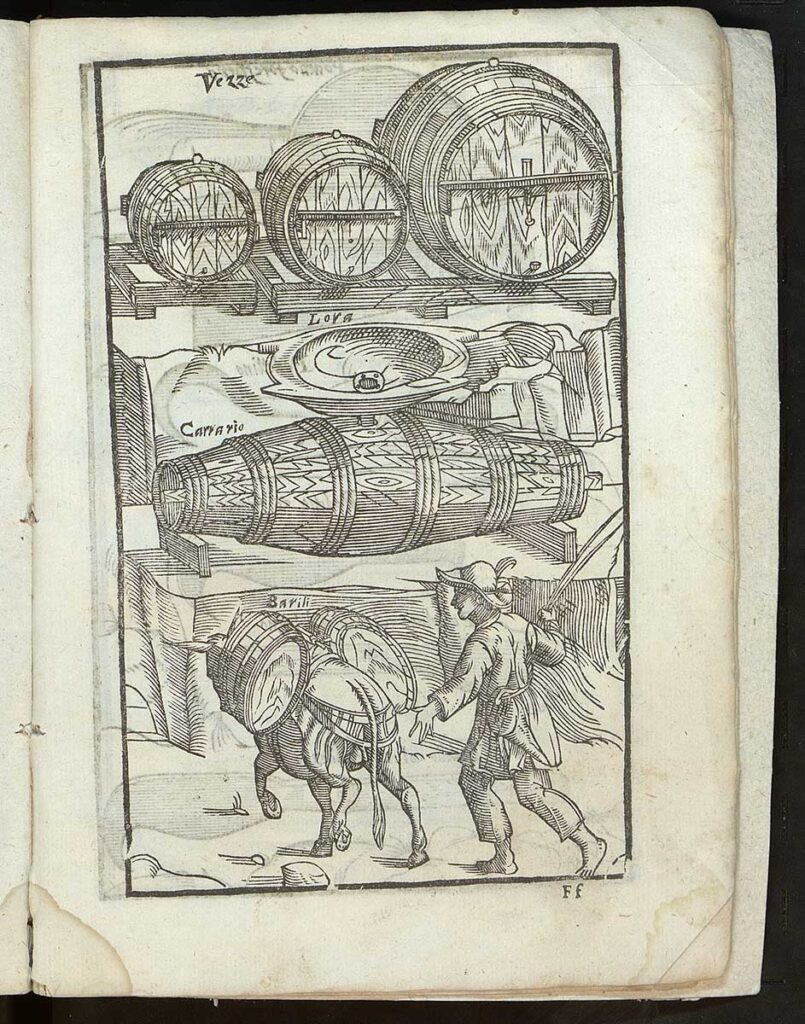
The rediscovery of the classical Roman culture was very important for wine because it made it possible to recover knowledge that had hitherto been lost. You have to think that, during the Middle Ages, agriculture had had to be reinvented or almost. Ancient knowledge had only been partially maintained (or recovered). The Renaissance interest in ancient agriculture depended in part on the great success of the 14th century agricultural treatise by Pietro de’ Crescenzi (which we have already mentioned). It had been unique for its time and was now considered a great classic. The introduction of printing allowed it to become more and more widespread, not only in its original Latin. It also began to be printed in Italian, as well as in many European languages..
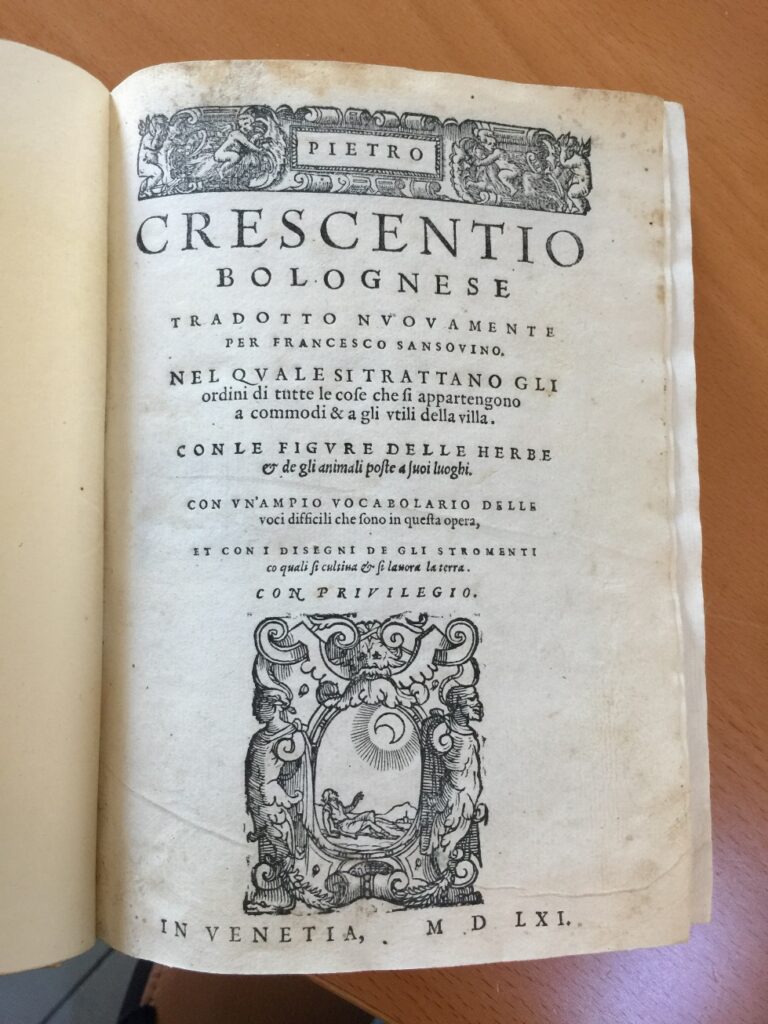
Pietro de’ Crescenzi’s treatise cited the great Roman agrarian authors as its main sources. The dissemination of this treatise and Humanism’s new sensitivity contributed to a great interest in the ancient Roman agriculture, hitherto little or no known. The interest in ancient culture led Renaissance Humanists to study its texts. There was often a real physical search for this cultural heritage. In fact, many works of antiquity, which had been saved in the dark ages and preserved in monasteries, still lay there, forgotten for centuries. In particular, Francesco Poggio Bracciolini found Columella’s “De re rustica” (“On agriculture”)in the library of the Cologne Cathedral, a work that remained as a reference for the wine production until the 18th century. Until then, it was considered lost. It was only known through the quotations of secondary authors. Due to its completeness and precision, this text is considered the first real agrarian treatise in history.
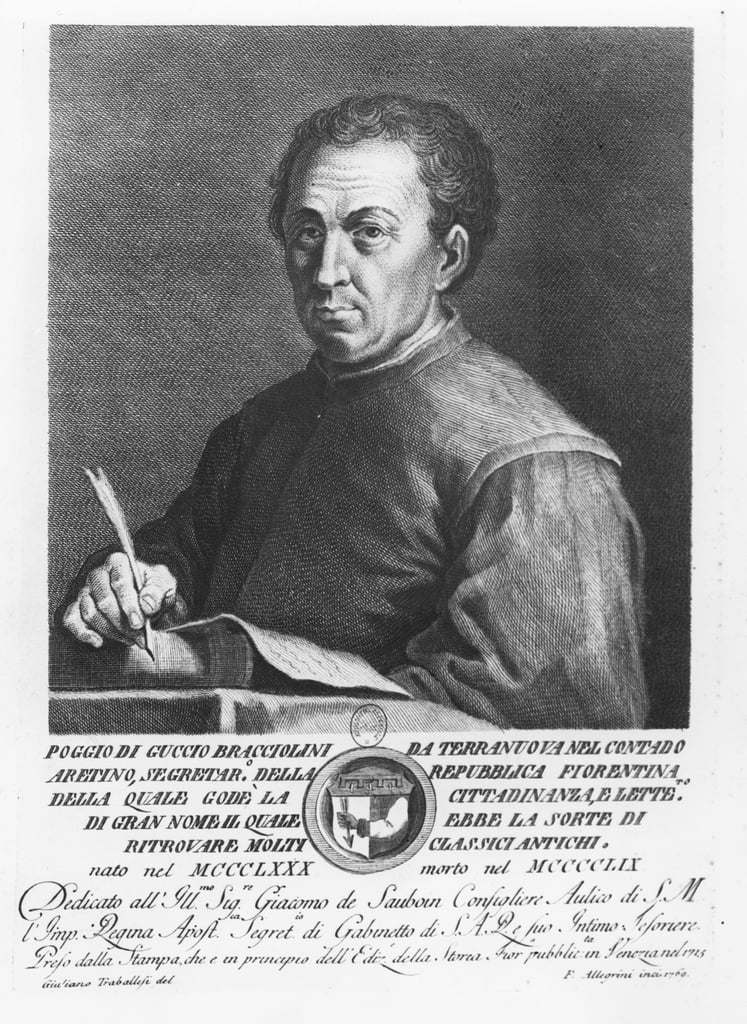
The treatises on viticulture and wine from these centuries are generally uninteresting from our point of view (except for the descriptions of production at the time) precisely because they almost slavishly propose Roman agrarian works, in particular the great Columella. For the time, however, they were very important, because they made it possible to recover and disseminate a lost knowledge. Ancient practices was more advanced and better than the practices of the time. Thanks to this cultural ferment, there began a change in the wine production, at least for those of greater value. Then, the technical evolution of the 17th century allowed the introduction of some new technological practices in wine, as we shall see later.
Let us remember, however, that in these centuries the most important transformations concerned only a small category of wines and territories. The agrarian works contained the pinnacle of knowledge, but it should not be assumed that they represented the main model of agrarian management at the time. The books were circulated only to a small elite of rich and educated people, who were evolved enough to understand the importance of certain changes. In the case of wine, innovations mainly concerned producers located in the most dynamic and trade-oriented territories (always the most important driver for qualitative improvement).
The vast majority of peasants and landowners did not own books, did not read them, or did not have the necessary sensitivity to grasp these developments. They continued to use the handed-down systems of oral tradition. In those days, fields and vineyards were generally neglected, not tended as they are today. The common tendency was to harvest the grapes very early, because theft was feared. Most wines were produced without care, hygiene was very poor. Wines had a short shelf life. They were mostly consumed locally, often still diluted with water and flavoured with herbs and spices. Only a few wines were of value and lasted long enough to be shipped.
In any case, among the many works on viticulture and wine production of the time, we mention “Le Dieci giornate dell’agricoltura e de’ piaceri della villa” (“Ten days on agriculture and pleasures in the farm”) by Agostino Gallo from Brescia (1565-1566), which was an incredible success and had a very high number of reprints, up to and including the 18th century, in northern Italy and France. Another example is “De Agricoltura” by the Paduan Africo Clemente (1572). The 1600 treatise by the Tuscan Giovan Vittorio Soderini is a reference text for Tuscan production. Then, there is Vincenzo Tanara from Bologna, “L’economia del cittadino in villa” (1644) (“The economy of the citizen in the farm”), which gives an extensive description of the Po Valley vineyards of the time. We will learn more about these and other authors below.
The great return of the ‘married’ vine.
The maple tree does not produce fruit, but I believe it was created by God to support the vine, which thrives on it and the grapes ripen excellently.
Giacomo Agostinetti, “Cento e dieci ricordi che formano il buon fattor di villa”, (1679).
We have already seen how, in the early Middle Ages, the low, intensive type of vine had taken over, occupying the narrow spaces close to the village or within the city walls. In the Late Middle Ages, with the opening up to the wide spaces of the countryside, there was an important return of the “married” vine that we already know from the ancient times. This model was consolidated and expanded even more in the Renaissance. It would not change much for all in Italy the following centuries, up to the 19th century, sometimes even until the mid-20th century. The cultivation of vines wedded to trees dominated on the farms for centuries in the central and northern Italy, with the exception of a few areas. The low vine, of ancient Greek derivation, with poles of cane or chestnut predominated in the south.
Let us not forget, however, that alongside the vineyards, the wild vines continued to be cultivated in Italy in the woods until almost the 20th century, as the “lambruscaie” in Maremma or other semi-primitive forms of viticulture. In Sardinia, in the codes of the time, a distinction is made between vineyards near the settlements, the “domestiae“, and those in wooded areas, the “binias de monte” or “herema“, but it is not clear whether they refer to the cultivation of Vitis vinifera sativa or to groups of wild vines.
In any case, the married vine, on which I have already written at length (especially here), returned to dominate the countryside of central and northern Italy, after having almost disappeared in the early Middle Ages. Leandro Alberti wrote in the “Descrittione di tutta Italia, nella quale si contiene il sito di essa, l’origine et le Signorie delle Città et delle Castella” (Description of whole Italy, with geography, origins, the Signoria of the cities and the castles), 1550, that “everywhere one sees artificial orders of trees on of which are the vines, which hang from every side“. There were many variations for each territory, with many different names. There were, however, two essential archetypes, which were nothing more than the ancient systems with new names, the “piantata” and the “alberata”. These two terms are often confused and reversed, but they were quite distinct originally.
The “piantata“ (which Tanara also calls “arboretto”) was none other than the ancient Roman “arbustum gallicum“. The vines were supported with rows of elms (or other trees) mainly placed along the farm boundaries or along the ditches. The vine shoots passed from tree to tree forming rows, sometimes interspersed with supports made from poles. The best known and most widespread was the “piantata padana“, the type of the Po Valley. It has been calculated that between the 15th and 17th centuries about 2/3 of arable land was arranged in this way in Emilia Romagna. They were called “abbragliati” lands. The Po Valley in general, which in these centuries completed its land reclamation and hydraulic arrangement, took on the typical orderly appearance of regular-shaped fields bordered by ditches and lanes, where almost every bank was marked by rows of vines. The married vine in the Po Valley remained until almost the middle of the 20th century. Vincenzo Tanara, from Bologna, wrote (1644): ”The rows of trees that support the vines: not much land is taken up with this system, and the rest can be cultivated in other ways. The trees that support the vine last a long time and allow the vine shoots to be very lush. They yield more than trees without the vines, are beautiful to look at and conveniently divide one field from another”.
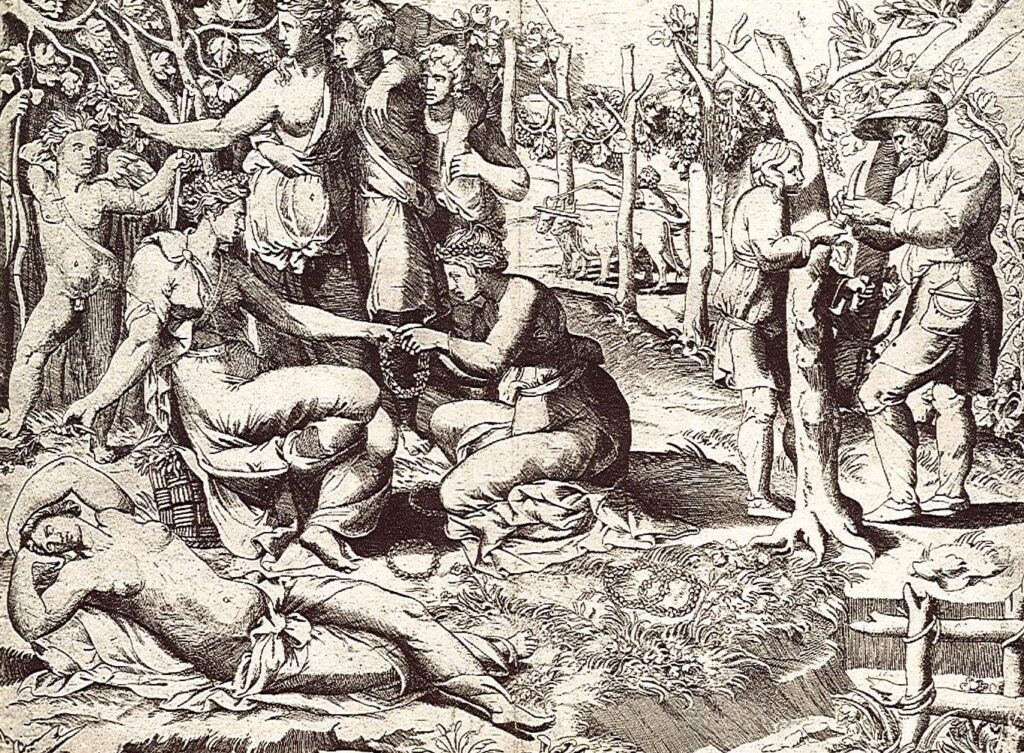
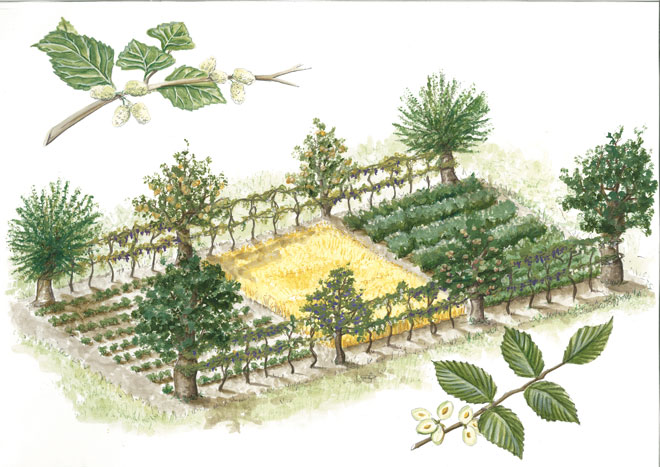
Not much different was the Venetian “piantata“, which remained until the years 1960-1970, with the term of “pianta” or “piantada“. Montesquieu wrote in 1728 in “Voyage en Italie”: “… The countryside from Verona to Mantua is very beautiful. In the fields, every fifty steps, there is a row of trees, a kind of elm, to which the vine is married and which covers them entirely… and so the same field produces wheat, wine, wood, not counting fruit trees such as the walnut-trees…”
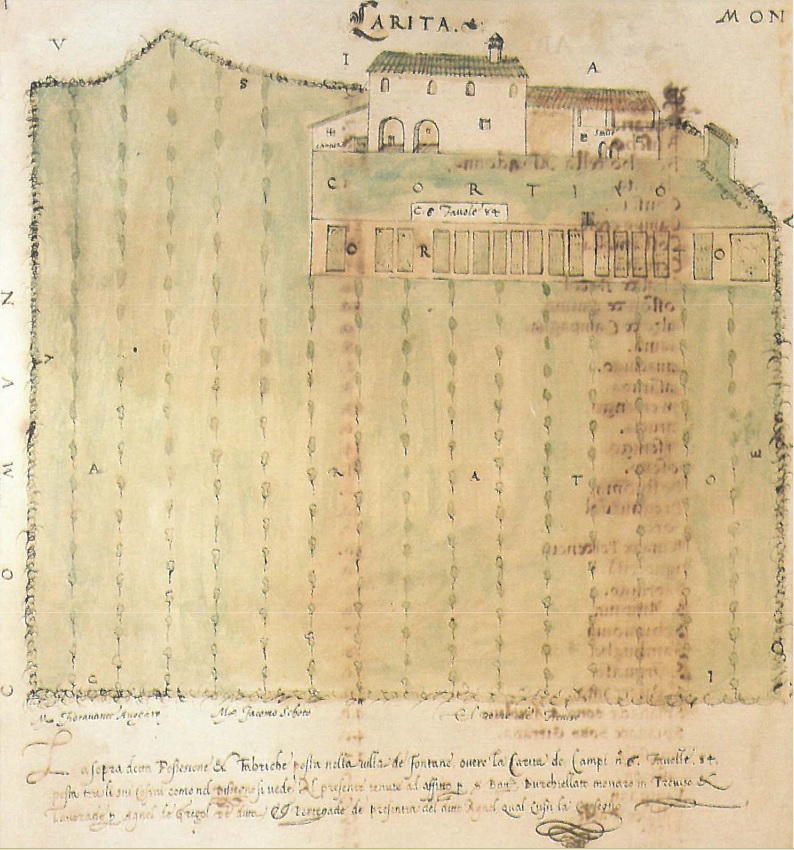
The “alberata” dominated in central Italy, especially in Tuscany, Umbria and the Marches. It was nothing more than the ancient Roman “arbustum italicum“, the old form of Etruscan and Roman origin. Here there were no rows. Strips of fields with cereals were alternated with small areas with married vines. One or two vines were married to each tree, with the branches fanned out over the canopy. Field maple was mainly used, but also willow or poplar, depending on the territories. The Tuscan “alberata“, which remained until the twentieth century, was described by Bernardo Davanzati (“Coltivazione toscana delle viti e di altri arbori”, “Tuscan cultivation of vines and other trees”, 1579).
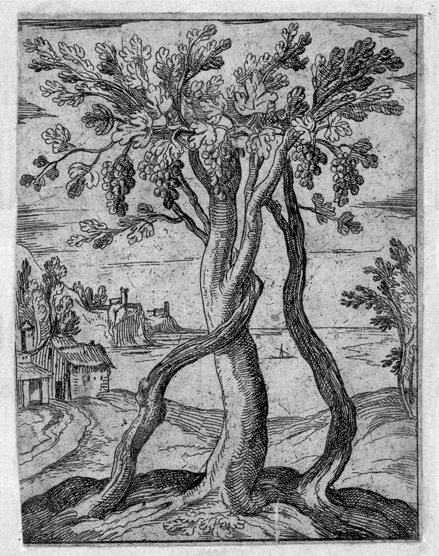
The choice of the tree was linked to local tradition, in continuity with the Etruscan-Roman era. The elm prevailed where the soils were more humid, typically in the Po Valley. Its leaves also were very useful for livstock fodder. Virgil already testified in the Georgics that in the Po valley the elm was the tree par excellence “married” to the vine. He described “under which star the soil must be turned and the elms tied to the vine“. The tree was the traditional field maple (“acero” in modern Italian, “opulus” in Latin) in the driest soils of central Italy and in other areas of the north, loved since the Etruscan era, called opi in Emilia Romagna, oppio or obolo in Veneto, lopi or loppi or pioppi in Tuscany. According to Aldo Sereni, there was such an identification between the maple and the married vine that these terms were sometimes used to generically indicate the tutor tree, whatever it was. Willow and poplar were used where it was especially necessary to produce poles, bundles and wicker, with damp soils, as in Campania. The mulberry was also used especially in the north-east (Veneto), to combine the production of wine with the income given by the silkworm. Fruit trees were also used, often the walnut, useful for the fruit, but also used to produce oil and wood for furnishings.
In the north, the main exception was Piedmont, where the married vine, here called “alteno”, was less widespread than the low vineyard. The “alteno” is mentioned in documents since the thirteenth century. The vine was grown on elm or field maple trees, alternating with cereals, legumes or hemp. This vine training system was more tied to the small or very small property than to the farm. It remained widespread until the end of the eighteenth century, indicated by various names (such as “campo altenato“, “alteno campivo“, “vigna campiva“, field with vines, meadow and vineyard), etc., then it disappeared.
The vine married in the countryside has instead persisted from antiquity almost to the present day. The most famous married vines are still today those of Aversa, mainly dedicated to the Asprinio variety. They were supported by 10-15 meters poplars, occasionally replaced by chestnut poles. The vine shoots were almost vertical, fanned out to join the neighboring trees.
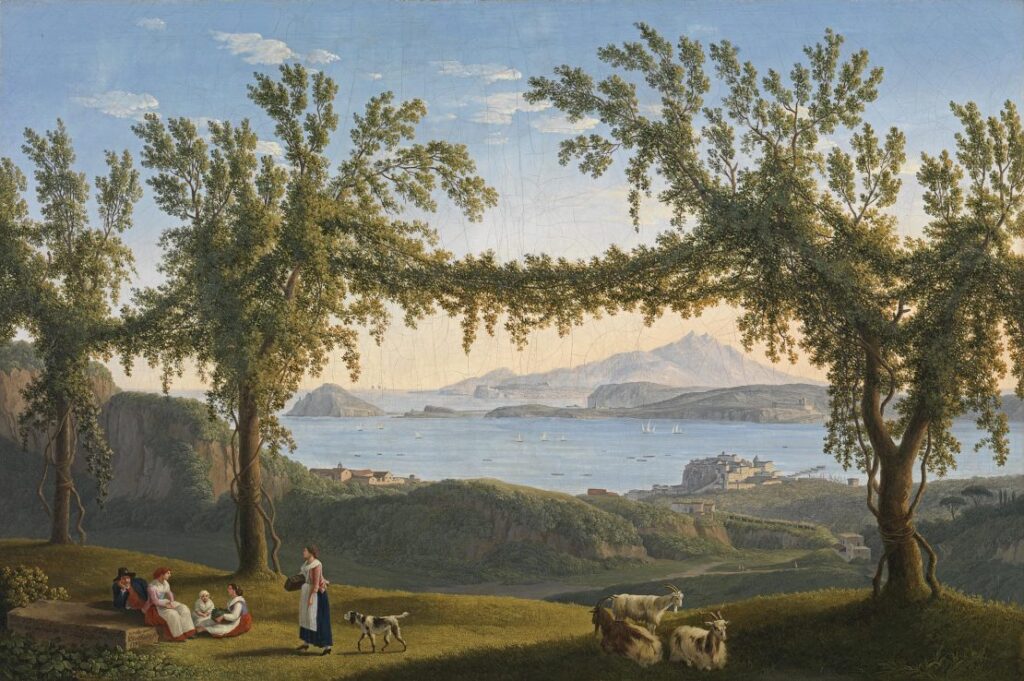
Goethe wrote in his “Journey to Italy”: “In the plain of Capua, … the poplars are planted in rows in the fields and the vines climb the well-developed branches. The vines are of an extraordinary vigor and height, the vine leaves sway like a net between poplar and poplar”. The architect Soufflot, on his trip to Italy in 1750, wrote: “Governed with a long branch, it is traditionally married to the poplar, in festoons stretched between one plant and another. The festoons, in which the branches are arranged in a net, can reach eight to ten meters in height; they constitute a veritable system of green backdrops with a textile behaviour in the luxuriant summer, above which the poplars shoots are few, pruned without scruple in the winter months to supply firewood to the big cities”.
Their description is not very different from the ancient one by Pliny the Elder (“Naturali Historia”): “In the countryside of Campania the vines are married to the poplar; clinging to the married plants and climbing on them from branch to branch, they reach the top at such a height that the contract of whoever is hired for the harvest provides (in the event of a fatal fall) the reimbursement of expenses for the funeral and the burial“.
The southern area of Cilento was of Greek influence, but the northern one had undergone the Etruscan tradition. Here, there were married vines on the edge of the fields, along the borders or on the ditches and drains. Elms, pear, wild apple trees and other fruit trees were used as tutors. There was a variant called “piantata” with pergola in the mountainous areas of Cilento. The vine was only grown up to the first branches of the tutor, since fruit trees were almost always used, to also preserve their production. Then, the vine shoots were guided on a pergola made of poles and wires.
A rich testimony of the period on Sardinian viticulture can be found in the “condaghes”, codes that report annotations of bequests and donations in favor of churches and religious communities, since the early Middle Ages. Then, they became actual patrimonial registers. The vineyards were cultivated as bush and also as married vine. In fact, some bequests mention the “virgariis” or “radicarii”, nurseries of young trees to be used as support for the married vines and for pergolas, according to techniques of ancient Roman derivation. The “cannabarii” were instead the nurseries where the canes were raised. The “pampinariu” was the land for the production of the cuttings. The “bagantinu” or “pastinu” was the land not yet cultivated, intended for the planting of the vineyard. The pergola vines were called “catriclas”. The ancient Roman custom of having the vines climb fruit trees, especially the fig tree, was often maintained. The orchard with vines was called “binias et pumo”. Instead, the poplar grove married to the vines was called “publiana cum bide”. The married vine will disappear in Sardinia in the nineteenth century.
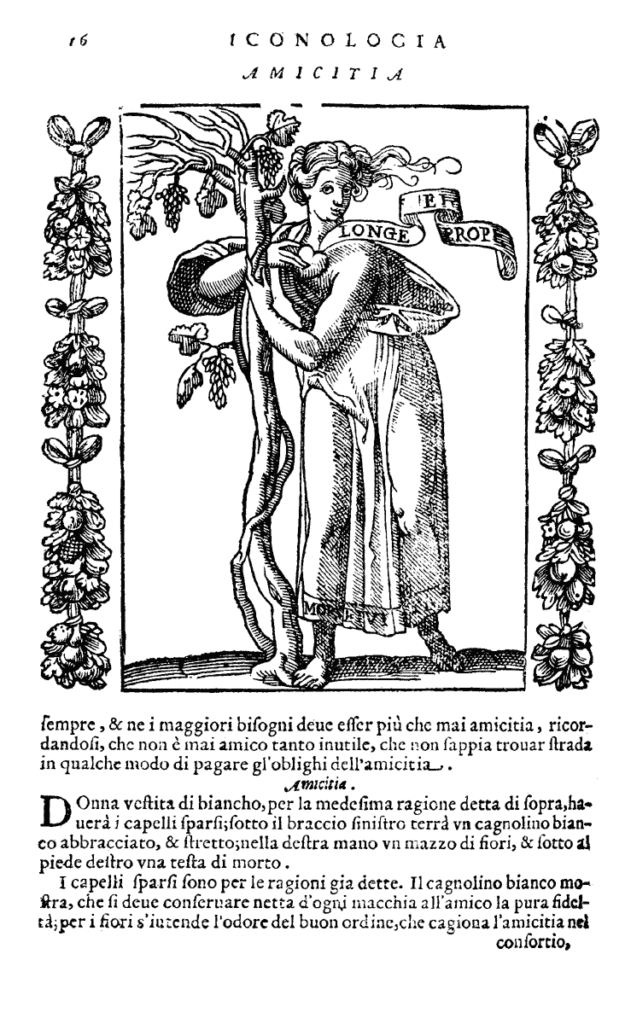
… continued …